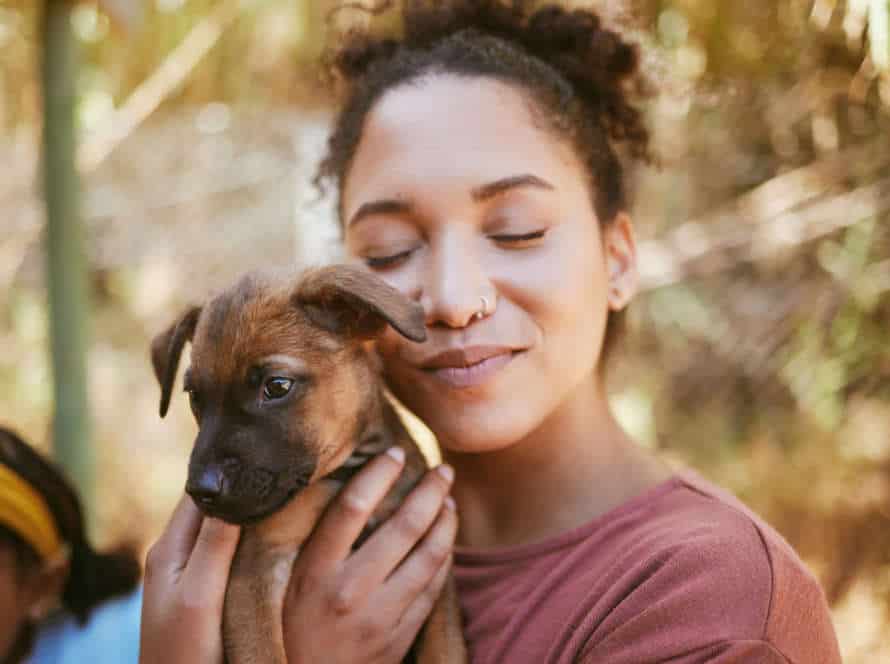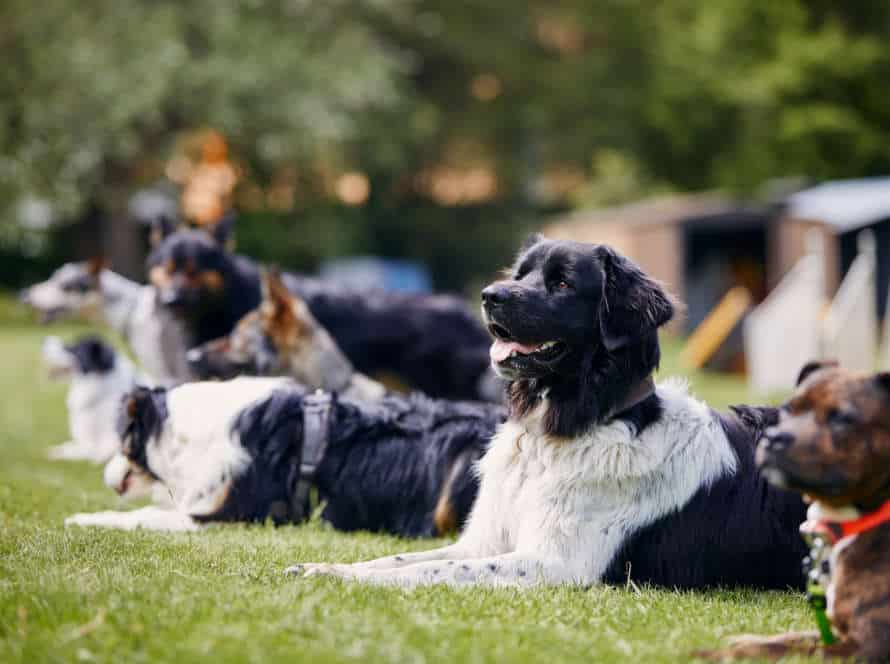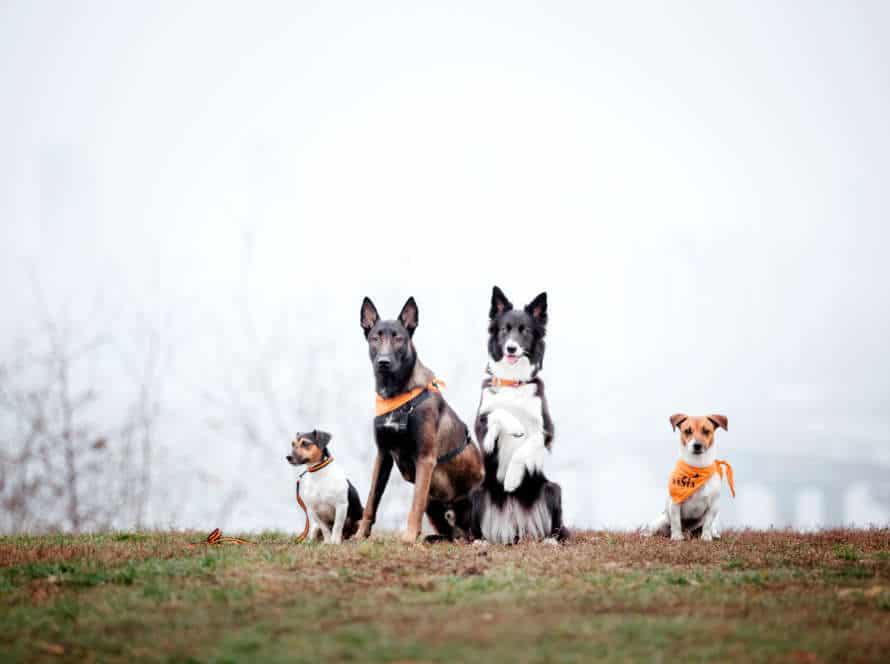Designer Dogs: What You Need to Know
Designer dogs are a hybrid breed. They are made by crossing two or more purebreds. This creates a unique pup with desirable qualities. Pet owners love designer dogs for their distinct personalities and hypoallergenic traits.
Before you adopt one, here’s what you need to know:
- Health concerns: Research the parents’ breed health issues. Make sure the puppy has had genetic testing.
- Training & socialization: You need to train and socialize your pup. Invest time and effort into this.
- Cost: Designer dogs might cost more. Be ready to pay more upfront and for their health care and maintenance.
Overall, designer dogs can be great family members. But, research and consider all the factors before making a decision.
Understanding Designer Dogs
Designer dogs, or hybrid dogs, are a mix of two purebreds. Breeding them can bring genetic diversity, meaning a healthier pup. So, let’s look at the pros and cons of designer dogs. That way, you can decide if this is right for you!
Definition of Designer Dogs
A designer dog is a mix of two purebreds. It’s made for combining desirable traits from both breeds. This “designer dog” concept became popular in the late 20th Century. Breeders and pet owners use it.
But, there are concerns about ethics. There’s often little info on the parent breeds and their health or temperament. It’s essential to research the breeder, parents, and health risks of a designer dog before buying one.
Also, adoption from shelters or rescue centers is a great way to get a loving pet. It doesn’t support bad breeding practices.
Famous Designer Dog Breeds
Designer dogs are a mix of breeds, bred for their peculiar size, looks and temperament. Here’s some popular ones with their characteristics:
- Labradoodle – mix between Poodle and Labrador Retriever. Intelligent, friendly and hypoallergenic. Great for allergy-prone families.
- Puggle – cross of a Pug and Beagle. Playful, affectionate and energetic. Perfect for families with kids.
- Cockapoo – combination of Cocker Spaniel and Poodle. Smart, loyal and adaptable. Great for living in apartments.
- Pomsky – Pomeranian and Siberian Husky mix. Playful, loving and energetic. Ideal for families with an active lifestyle.
- Goldendoodle – mix of Poodle and Golden Retriever. Intelligent, friendly and hypoallergenic. Perfect for those wanting a bigger breed.
Designer dogs have become fashionable recently. It’s important to do your research before buying one, to make sure they fit into your lifestyle and come from a reputable breeder.
Benefits and drawbacks of owning a Designer Dog
Designer dogs are desired ’cause of their unique looks and temperaments. But, owning one has both pros and cons. Pros include:
- Generally bred for traits like hypoallergenic coats and friendly dispositions.
- Healthier than purebred dogs due to hybrid vigor.
- A wide variety of breed combinations to suit owners’ exact preferences.
Cons include:
- Expensive to purchase and maintain.
- Prone to inherited health issues from breeding methods.
- Not recognized as an official breed, making it hard to find reputable breeders or dog shows.
Before committing, it’s important to think through the potential pros and cons of owning a designer dog.
Designer Dog Breeding Process
Designer dogs? Fancy! They’re bred through a selective process. Sometimes, this involves two purebreds, like a Poodle and a Maltese. Or, it could be more than two breeds. Breeding designer dogs takes time and money. So, let’s take a peek at the breeding process for these pups.
Types of Designer Dog Breedings
Designer dog breeding is a way of making a new breed. It’s done by crossing two different purebred dogs. There are different types of designer dog breedings, including:
- F1 Hybrid: This is the first generation crossbreed. It’s made by mating two different purebred dogs.
- F1B Hybrid: This is from an F1 hybrid bred to one of the original parent breeds. For example, a Poodle bred with a Goldendoodle to make a F1B Goldendoodle.
- Multigenerational Hybrid: This is from breeding two F1B hybrids or an F1 hybrid with one of the parent breeds.
These breedings help breeders make designer dogs with desired traits, like hypoallergenic coats, intelligence, and temperament. But, crossbreeding can also cause health issues. So, it’s important to choose a reputable breeder who puts the health of their dogs first.
Pros and Cons of Designer Dog Breeding
Designer dog breeding is a highly debated subject. There are both positives and negatives to be aware of.
Pros:
- Desired traits: Breeding designer dogs can give breeders the opportunity to produce specific characteristics.
- Less health problems: Designer dogs might suffer from fewer medical issues than purebreds.
- Gaining fame: More people are drawn to designer dogs, as they possess a unique blend of breeds.
Cons:
- Genetic health issues: Designer dogs can inherit genetic health issues from their parents.
- Cost: Designer dogs may cost more than purebreds.
- Varying standards: As there are no set standards for designer dogs, their traits can differ.
It is essential to weigh up the advantages and disadvantages of owning a designer dog, plus be aware of the breeding process.
Ethical Considerations
Designer dog breeding is a popular trend. But, it raises ethical considerations. Think about them before investing in a designer dog.
- Health risks for designer dogs. Breeding two breeds to create a new one can result in genetic disorders.
- High costs. Designer dogs can be pricey, which can put off potential pet owners.
- Supporting unethical breeders. Some focus solely on profit, with no care for proper breeding practices.
- Increased demand. Popularity of designer dogs can lead to animal overpopulation and abandoned dogs in shelters.
So, research the breeder and their practices before buying a designer dog. Or, adopt a mixed breed from a shelter or rescue, and avoid these ethical issues.
Designer Dog Health
Designer dogs are a hot pet pick for many. Yet, their health and well-being is one of the vital things to consider. Pros and cons of owning a designer dog should be weighed before going ahead. It is also vital to know potential health issues that come with designer dogs.
Health issues in Designer Dogs
Designer dogs can get common health issues. In some cases, they may even be prone to certain genetic disorders. Here are some of these health issues to watch out for:
- Hip dysplasia: This genetic disorder affects the hip joints. Breeds like Pugs, French Bulldogs, and Boston Terriers are especially prone.
- Eye problems: Chihuahuas, Shih Tzus, and Pomeranians with large, bulging eyes may develop cataracts, glaucoma, and corneal ulcers.
- Allergies: Labradoodles, Goldendoodles, and Cockapoos may suffer from skin, food, and environmental allergies.
To keep your designer dog healthy, do regular vet check-ups, feed a healthy diet, and provide exercise and mental stimulation.
Designer Dog Diet
Designer dogs are becoming fashionable. Knowing their diet needs is vital. Here are some tips:
- Do research: Check the health issues and nutritional requirements for your dog’s breed.
- Keep an eye on their weight: Exercise and healthy meals are essential to stop them from becoming obese.
- Be wary of cheap food: Avoid commercial food with fillers like corn and soy. Opt for high-quality, protein-rich food.
- Treats and table scraps: Don’t give them too many. Also, don’t give them foods which are poisonous, like chocolate or grapes.
- Pro tip: Exercise and a balanced diet are key for a healthy, happy designer dog.
Designer Dog Exercise Requirements
Designer dogs are made by crossing two purebreds. It’s to create a pup with desirable traits that pet owners love. Each breed has its own exercise needs.
Labradoodles: 30 mins to an hour of jogging, walking or fetch daily.
Goldendoodles: Moderate exercise for 20-30 mins per day.
Puggles: 30 mins of running, walking or playing fetch.
Pomskies: Small and need regular exercise, but just 20-30 minutes per day.
Cockapoos: Moderate exercise from 30-60 mins daily. This includes walks, jogs and playtime.
Remember that exercise needs vary depending on age and size. Also, it benefits their physical and mental health. Keeping them active is key for their long life and overall wellbeing. Pro tip: Designer dogs are loyal and need physical activity to stay healthy and sharp.
Designer Dog Training
Designer dogs, also known as “designer breeds,” are a mix of two or more purebred dogs. They are specially bred to create a new breed. Training any dog demands patience and commitment. But, designer dogs need more due to their distinct personalities and characteristics. This section will discuss the finest ways to train a designer dog.
Designer Dog Intelligence
Designer dogs are created by combining two purebreds for a smarter, more teachable pup. Training them needs effort, patience and consistency, no matter the breed. Here’s what you should know:
- Start early – Training should begin when your pup is 8 weeks old to form good habits and avoid bad ones.
- Use positive reinforcement – Reward your dog with treats, toys or compliments when they do something right.
- Keep training sessions short – 10-15 minute, frequent sessions are more successful than a long one.
- Socialize – Introduce your pup to new people, animals and places early on to prevent behavior issues later.
- Be consistent – Use the same cues, rewards and corrections to ensure your pup isn’t confused.
Training Techniques for Designer Dogs
Designer dogs are a cross between two purebreds, resulting in a unique look! Training them needs certain tactics – taking into account their temper, personality and physical features. Here’s some tips:
- Positive Reinforcement – Encourage good behavior with treats, verbal cues or physical rewards.
- Socialization – Let your designer dog mix with other dogs and people, so they’re comfy in many social situations.
- Consistency – Be consistent in training, so they learn the correct habits and behaviors.
- Patience – They may be stubborn, so you need patience during training. No punishment-based tactics as these can cause fear or aggression.
- Adaptability – Adapt your training to the needs and abilities of your designer dog.
Pro tip – If commands are tough to follow, break them down and reward each completed task!
Behavioral Issues in Designer Dogs
Designer dogs are popular for their unique traits, however, they can be tricky to handle if not trained properly. Thus, designer dog training is essential. Here’s what you need to know:
- Different breeds have different training needs.
- Start early, from puppyhood, to build good habits.
- Socialize them with people, other dogs, and new environments.
- Use consistency, patience, and positive reinforcement.
Pro Tip – Specialized training is a must for designer dogs. Training and socializing can help keep behavioral issues at bay, giving you a happy and well-adjusted pup!
Designer Dog Adoption
Designer dogs are all the rage for those seeking a pet. They are created by mixing two pure breeds. People value their designer pedigree. But, when it comes to adopting one, there are a few things to be aware of. It’s different from traditional pet adoption. Here’s what you need to know.
Finding a Responsible Breeder
Finding the perfect designer dog? Get a healthy and well-adjusted pup by finding a responsible breeder. Here’s how:
- Research the breed to understand its needs and health issues.
- Look for breeders who are part of national or local breeding organizations. They should follow their standards and guidelines.
- Visit the facility and check out the puppies’ living conditions and medical records.
- Ask the breeder about their practices, socialization of pups, and the parents’ health and behavior.
- Stay away from breeders who won’t let you visit, won’t give medical records, or can’t answer your questions.
- A responsible breeder cares about the dogs and wants them to go to good homes.
Pro Tip: Consider adoption from a shelter or rescue organization to give a loving home to a pup in need.
Designer Dog adoption from a rescue
Designer dog adoption is a great way to get a furry companion, while also supporting animal rescues. But first, there are a few things you should know.
Designer dogs are hybrids of two different breeds, so they have traits from both parents. They can have different personalities, energy levels and health issues. You should research the breed mix, and any health concerns that might come up. Be ready for a high energy level and grooming needs.
Work with a reputable rescue organization to make sure your designer dog is well-cared for and has had proper medical attention and socialization.
Adopting a designer dog can be fun for both you and your new friend. Research and work with a rescue, and you’ll find the perfect addition to your family.
Designer Dog Adoption Checklist
Designer dog adoption can be thrilling! But, be ready before welcoming your little one. Here’s a list of things to ponder:
- Research: Check the breed you’re into, to make sure it’s right for your needs and lifestyle.
- Breeder: Choose a reliable breeder or rescue organization with ethical practices.
- Cost: Plan for fees, food, supplies, medical costs, and training.
- Living situation: Consider if your home is suitable for the pup’s size, temper, and exercise needs.
- Time commitment: Make sure you have adequate time for the pup’s care and training.
- Family: Talk to everyone in your home. Make sure all are ready for pet ownership duties.
Pro tip: Don’t hop in too soon. Take your time to find the best fit for you.
Frequently Asked Questions
What are designer dogs?
Designer dogs refer to dogs that are intentionally bred by crossing two different purebred dogs to create a new mixed breed. These dogs are often given clever names, such as Labradoodle or Cockapoo, that reflect the breeds that were used to create them.
Are designer dogs healthy?
Like all dogs, designer dogs can experience health problems. However, because they are a mixed breed, they can also inherit the traits of both parent breeds, which may help to reduce the risk of certain genetic health issues that are common in purebred dogs.
How do I choose a designer dog?
Choosing a designer dog should involve careful consideration of both parent breeds to determine which traits, such as size, energy level, and personality, best suit your lifestyle and personality. It’s also important to research reputable breeders who prioritize the health and well-being of their dogs.
What should I expect when owning a designer dog?
Owning a designer dog can be a rewarding experience, but it also requires a commitment to training, socialization, and regular exercise. Depending on the breed and individual dog, they may be more prone to certain behaviors, such as excessive barking, that may need to be addressed through training.
How much do designer dogs cost?
The cost of a designer dog can vary widely depending on the breeder, location, and popularity of the breed. On average, however, designer dogs can cost anywhere from a few hundred to several thousand dollars.
Are designer dogs recognized by breed clubs?
No, designer dogs are not officially recognized by breed clubs or organizations such as the American Kennel Club (AKC). However, some designer dog breeds, such as the Labradoodle, have gained popularity in recent years and may eventually be recognized by breed organizations.







